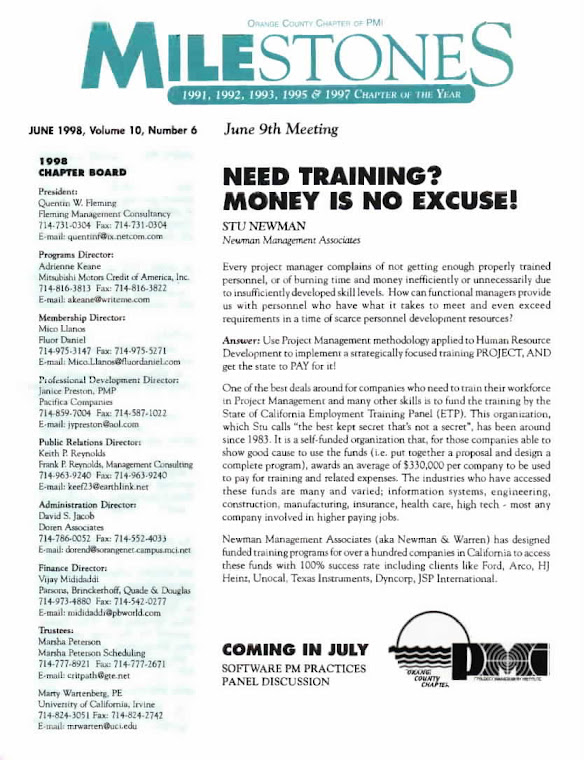What if we wanted to know not just how much schedule variance we might have in dollars or work units, but how much calendar or time variance our project has? Well, there is a way to use Earned Value methodology to arrive at what is called "Earned Schedule."
Earned Value provides Schedule Variance in units (typically money). "You're $12,500 behind schedule," is useful once we understand the meaning, but also sounds funny, and tells us nothing about what that means in units of time. Does a dollar = a minute, an hour, a day, a week, a month. To find out we need to know the labor rate for the work effort being performed. For a collection of Work Packages with various rates it could be difficult to make the calculation (not to mention the material/ODC aspects). Furthermore, when we are reported to folks who are not familiar with EVM (like some senior management types), it is hard to communicate the meaning of SV.
Enter Earned Schedule. Using Earned Value and Planned Value, the schedule variance in the traditional Earned Value view looks like the following:
EV
SV = Schedule Variance = EV - PV. Both these metrics and the resulting variance have units of money.
For Earned Schedule, the visualization of Schedule Variance answers the question, "on what day should we be earning the planned value for the work being performed?"
ES
If you "take" Earned Value "today," that is calculate EV using Physical Percent Complete or some other credible assessment of progress and determine the day that value was planned to be achieved, then you can tell if you are ahead or behind schedule. If the currently measured EV is achieved on the same day your had planned to achieve that value - the PV for today, then you're on schedule.
If EV≠PV now (the measurement day), then you're off.
Looking backward (or foreword) for the day EV = PV for today, tells you the day you should have achieved the planned EV. This backward duration is how late you are in DAYS, not "money."
This process reveals the essence of Earned Schedule.
Friday, January 13, 2012
Subscribe to:
Post Comments (Atom)




No comments:
Post a Comment